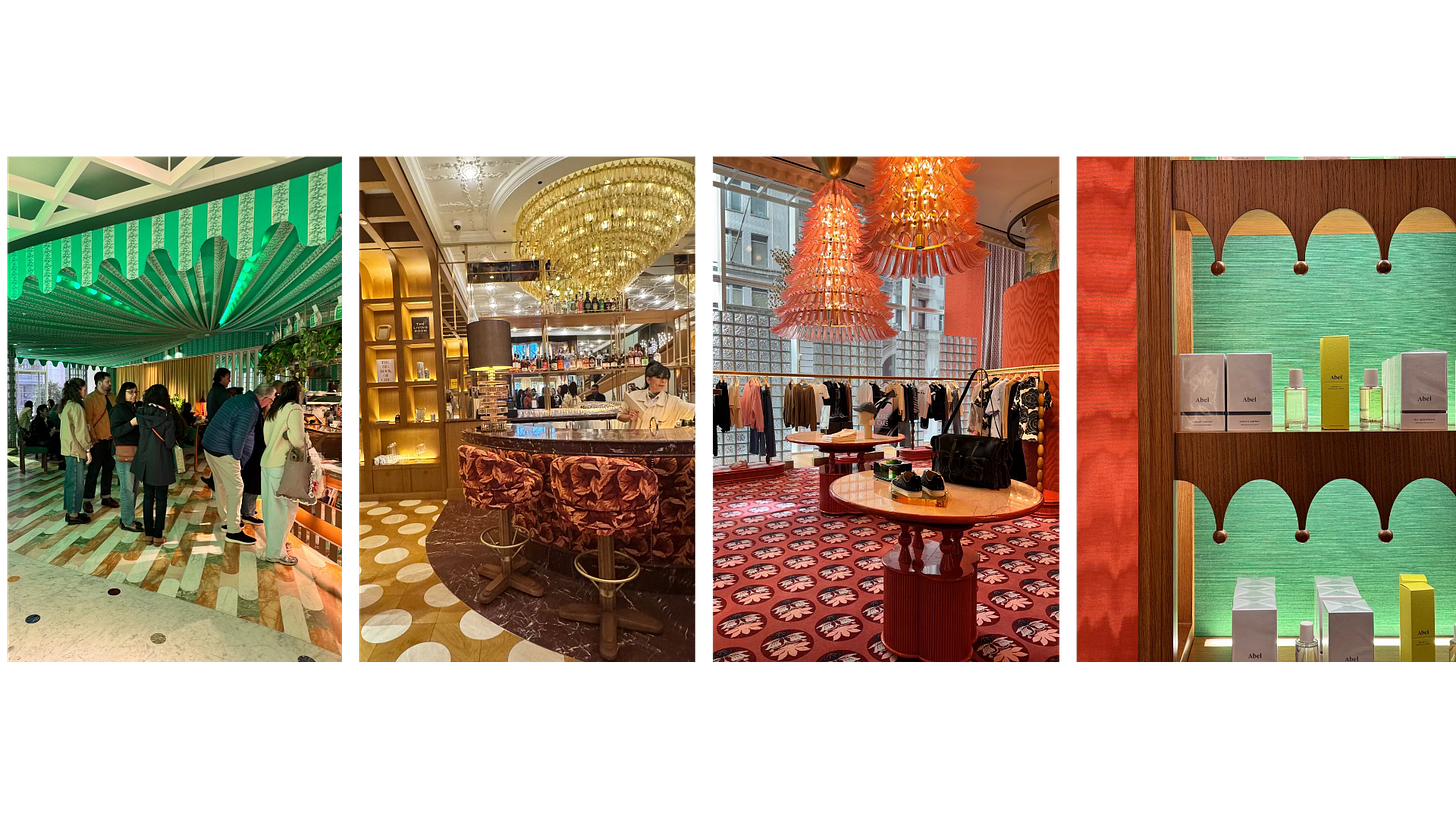We Want to be Enchanted
Brand mythology: a form of vibrant resistance in the face of retail blahs
In February we wrote a newsletter on the art of building loved brands… and it led to an internal conversation about “Well, what brands do you love?”
That turned into a conversation about magic. Not witches-and-wands magic, but the cinematic, atmospheric kind—the kind that pulls you into another world.
Here were a few of the winners:
Schiaparelli
Officine Universelle Buly 1803
Dear Cecilia (this wonderfully niche equestrian-inspired brand, and none of us ride horses)
Cire Trudon (yes we’re suckers for beauty and fragrance brands)
Loewe (note, this was for the JW Anderson era, let’s see what Proenza Schouler’s Jack and Lazaro bring to the table)
(And hospitality was a part of this too- Raoul’s, The Bowery Hotel, the Beverly Hills Hotel.)
These brands all have stories that enchant us, consistently. And in an era of what we might call retail demolition—a growing tide of closures, sameness, and existential fatigue—enchantment isn’t just delightful. It’s a strategy. A kind of resistance.
Maybe even a lifeline.
Retail Is Breaking. Lore Is Building.
It’s like the retail landscape that existed 20 years ago is in a demolition derby. Malls, department stores, retailers… everyone is scrambling to figure out the new way forward. A lot of the time, shopping—whether online or IRL—has brought on the blahs instead of the ahhs.
Then something interesting happened in March ‘25:
Printemps opened its first-ever U.S. store in New York City. And they said very explicitly they are “not a department store.” In fact, they are calling it a hospitality project.
Having visited, it’s a beautifully-rendered experience of retail as theatre, as storybook, as expensive playground, as world.
In our annual macro trends report, we talked about More Lore…and how critical “worldbuilding” is: the strategic layering of aesthetic, ritual, and storytelling to create immersive emotional resonance.
“In an age of too much stuff, lore isn’t just nice to have—it’s what makes us care.”
[More Lore, BLL, Jan 2025]
Enchantment Is a Form of Resistance
In a culture optimized for scale and speed, enchantment feels rebellious.
In a world of logic, it invites irrational, joyful belief.
In a landscape of crumbling storefronts and soulless checkouts, it offers a reason to stay.
Loewe, under JW Anderson, was particularly fluent in this magic. From Studio Ghibli collaborations to anthropomorphic vegetables stitched onto luxury sweaters to tomato purses, Loewe wasn’t just fashionable—it was lore-rich. It told stories without words. It let the brand feel human, humorous, and poetic—without explaining the joke.
And then there’s Bode, whose stores in Tribeca and Paris are less like flagships and more like living rooms from a dream you had. Wood-paneled walls. Quilt-covered furniture. Staff who know the history of every item, because every item has a history. These are not stores—they’re physical expressions of a brand’s soul.
Mythmaking > Merchandising
We’re in an era where successful brands don’t just sell—they mythologize. They invite you into a world. They create:
Cultural continuity in a fragmented economy
Emotional transport in a crowded market
Community belonging in a time of algorithmic disconnection
This isn’t “content.” It’s culture. And it’s why the brands that are thriving right now aren’t necessarily the loudest. They’re the ones with the most deeply felt point of view.
What the Enchanting Brands Do Differently
They build texture, not just tone. They resist overexplanation. They trade velocity for gravity.
They:
Create layered sensory experiences (Cire Trudon’s scent meets sound meets story)
Build physical spaces that feel intimate and idiosyncratic (Bode, Printemps)
Collaborate playfully and purposefully (Loewe x Suna Fujita)
Let mystery be part of the magnetism (Officine Universelle Buly, Bottega Veneta)
As More Lore puts it, these brands treat storytelling not as marketing, but as material. Something you can see, smell, and step inside.
Final Thought
We are living through a great unweaving of retail-as-we-knew-it. And we don’t need more “stuff.” We need reasons to feel again. We deserve a little magic. And stories are the key.
We want brands that can cast a spell on us.
Because in a time when so much feels flat, fast, and forgettable, we want to be transported.
We want to be delighted. Surprised. Moved.
Enchant us, and you win our hearts and our wallets.
Brand Strategy Takeaways
1. Build a Brand Universe
Use narrative, design, and experience to construct a world people can step into.
2. Treat Story as a Material
Don’t just tell stories—embed them into product, space, and interaction.
3. Create Texture, Not Just Tone
Use scent, sound, color, ritual, and language to build emotional resonance.
4. Embrace Mystery
Not everything has to be explained. Leave room for discovery.
5. Offer Symbolic Value
Make objects feel like artifacts—worth keeping, sharing, and believing in.
PS… this is the sort of thing we do, so give us a shout if you’d like to explore a project with us.







Love this... rich with inspiration here. Interesting that Buly & Cire Trudon came from some of the same minds... real talents!